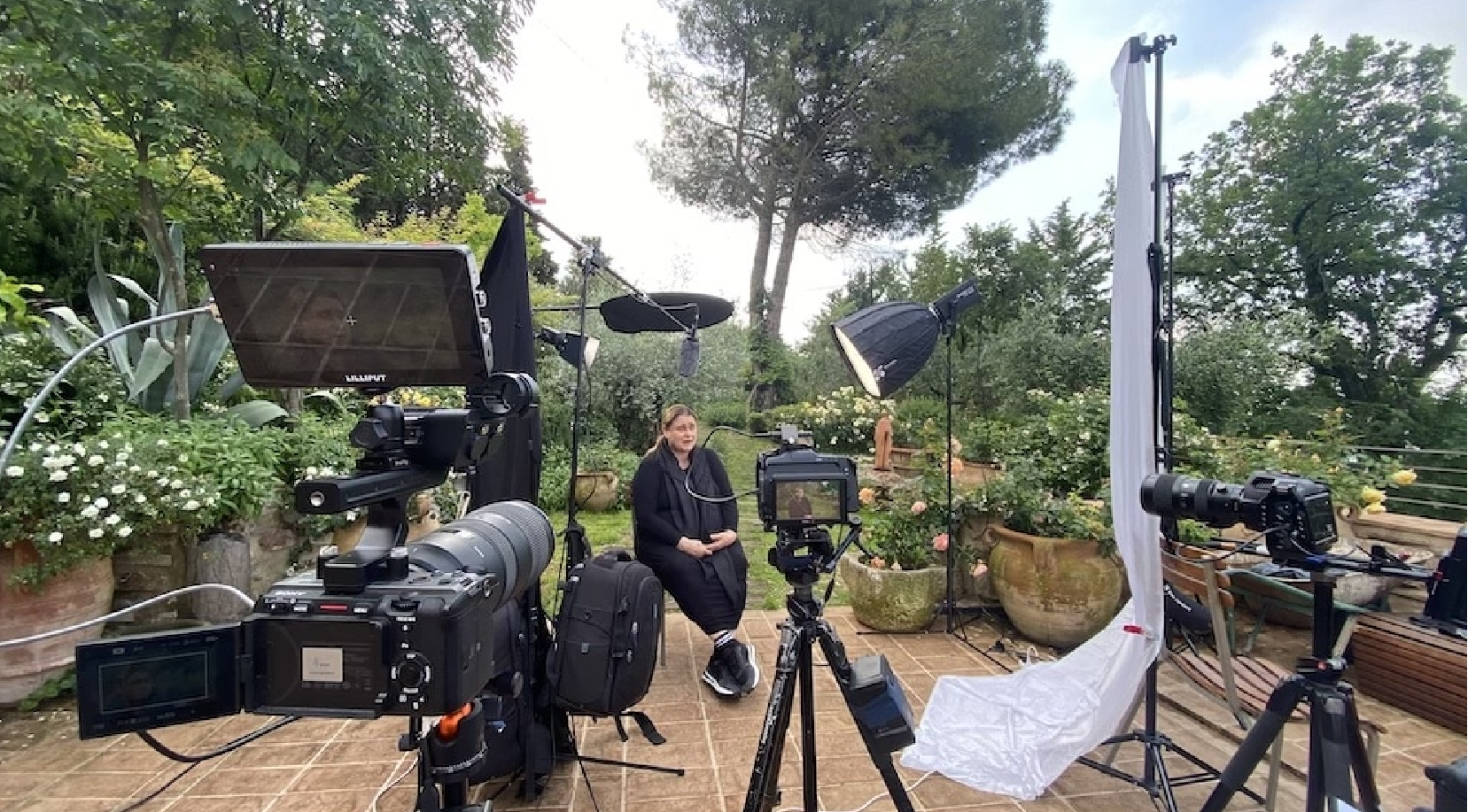(ZENIT News / Seattle, 08.19.2024).- In June, a cameraman from Seattle-based Castletown Media captured an extraordinary journey as 152 high school students from North Dakota embarked on a pilgrimage to Rome. This spiritual voyage, which included a poignant stop in Assisi, will be featured in the upcoming documentary “Roadmap to Reality: Carlo Acutis and Our Digital Age”, set for theatrical release next year.
The film crew followed the group as they traversed the Atlantic, documenting their visit to the tomb of Carlo Acutis, a teenager on the path to sainthood who will be canonized in 2025. This visit was especially moving for the students, who found themselves standing before the preserved body of a young man who, dressed in jeans and a hoodie, looked strikingly like one of their own.

Carlo, who passed away at just 15 in 2006, has been dubbed a «saint for the digital age» and is poised to become the first millennial to be canonized. His life and legacy resonate deeply with today’s youth, particularly those navigating the challenges of the modern, tech-driven world.
Jerome Richter, Vice President of the University of Mary in Bismarck, organized the pilgrimage. He described the students’ reactions as powerful and transformative. «Seeing the face of a saint who looked so much like them was overwhelming,» Richter shared. «Some cried without knowing why, while others were deeply inspired, feeling a connection to Carlo as a peer rather than a distant figure.»
These reactions are central to the documentary, which aims to explore how Carlo’s life and message provide guidance in an increasingly digital world. «We are viewing the world through Carlo’s eyes,» explained Tim Moriarty, Executive Producer at Castletown Media and the film’s director. «He approached the rapidly advancing digital landscape with a profound Catholic faith, offering a roadmap for how we can remain grounded in an ever-shifting world.»

Carlo’s story is a testament to the potential of technology when used with intention and faith. Known as «God’s influencer,» Carlo harnessed his self-taught computer skills to create a website cataloging Eucharistic miracles, an endeavor that blended his love for technology with his deep devotion to the Eucharist.
«Carlo was not just a passive user of technology,» Moriarty noted. «He used it as a tool for evangelization, setting boundaries for himself and focusing on what truly mattered. His life is a guide on how to engage with the digital world without losing sight of our spiritual and human connections.»
The documentary also features insights from Carlo’s family, friends, and other notable figures, painting a vivid picture of his life. Particularly compelling is the testimony from his mother, Antonia Salzano, who credits Carlo with deepening her own faith. Another powerful account comes from Rajesh Mohur, a former Hindu who converted to Catholicism after being profoundly influenced by Carlo’s devotion during his time as the family’s caretaker.
“Roadmap to Reality” is more than just a biography of a young saint; it’s a message of hope for today’s youth. As Moriarty emphasized, «In a world where many young people struggle with feelings of hopelessness, Carlo’s life shows that holiness is not only possible but relevant in our times.»
The pilgrimage, where students were encouraged to disconnect from technology to fully immerse themselves in prayer and reflection, serves as a potent backdrop for the film. The experience underscored the importance of stepping away from digital distractions to reconnect with faith and purpose.
Moriarty, whose own faith deepened during the making of the film, hopes “Roadmap to Reality” will inspire viewers to find their own path to holiness in the modern world. «Carlo’s story is one of hope and relevance,» he said. «He shows us that even in this digital age, sanctity is within reach.»
Thank you for reading our content. If you would like to receive ZENIT’s daily e-mail news, you can subscribe for free through this link.



